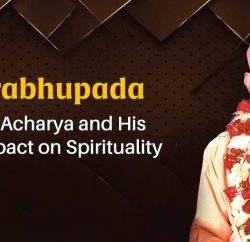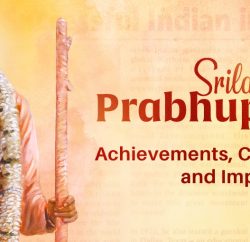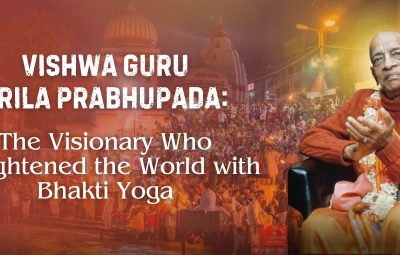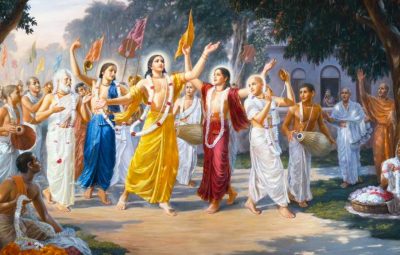Do you know about the glorious Krishna temples in Gujarat, Rajasthan and Manipur, each with a charming deity of Lord Krishna?
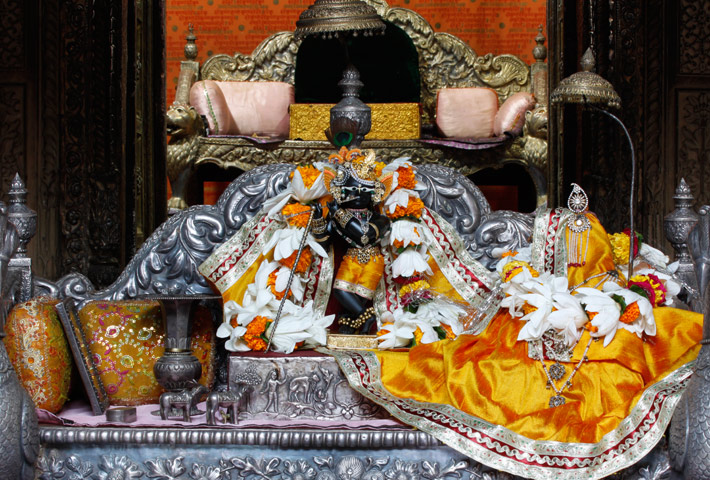
The appearance of Sri Krishna 5000 years ago on this planet, is woven into the historical and cultural fabric of every state of India. In this land, Bharatavarsha, diverse languages and cultures define geographical boundaries. It is the seventh largest country that supports a population which ranks second in the world. Here, Krishna is the favorite subject of different aspects of culture: music, dance and literature.
Sri Krishna appeared in His original form in Vraja Bhumi, His transcendental abode, which descended with Him 5000 years ago. Though Krishna spent only the first ten years of His life in Vrindavana, it is the most sacred place on earth. Vrindavana abounds with places associated with His pastimes. From the prison cell in Mathura where He appeared as the son of Vasudeva and Devaki to the pastures and forests where He frolicked with His friends, the gopas, and the groves where He danced with the cowherd girls or gopis, as well as the houses where His mischief and love filled the hearts of Nanda and Yashoda, His foster parents, with transcendental ecstasy.
Vrajabhumi bears witness to the presence of the Supreme Lord who mercifully came to earth to bless His devotees who aspired to serve Him and to vanquish the demons who burdened Mother Earth with their atrocities. His father, Nanda Maharaj’s residences still stand in Gokul and Kaman, now protected as historical monuments by the archaeological department of the Government of India. In His later appearance, over 500 years ago, as Sri Chaitanya Mahaprabhu, Lord Krishna revealed these sacred locations through His followers, the Six Goswamis, for the benefit of the fallen souls of Kali yuga.
Let us now follow the different states of India where Lord Krishna appeared in His archa form to benefit the people of that region.
Gujarat is blessed to be the state where Krishna’s ruling capital, Dvaraka is located. On the shores of the Arabian Sea is the Dvarakadisha temple, where Krishna is worshipped as the Lord of Dvaraka, the fortressed city that He built as the seat of His Yadu dynasty. This is another historical monument protected by the archaeological department as the temple has been recognized to be built by Krishna’s great grandson, Vajranabha. That’s not all. Under the sea, off the coast of the present day city, lies the original city of Dvaraka, with artifacts that prove the existence of a flourishing harbor and city, which was submerged, as the scriptures have revealed, when Lord Krishna ended His pastimes on earth, just before the dawn of Kali yuga.
Some of the prominent temples of Lord Krishna in Gujarat are:

Dvarakadish – Dvaraka
Ranchor Rai – Dakor
Madhav Rai – Porbandar
Tulsishyam – Junagarh
Sri Krishna – Mul Dvaraka
Rajasthan, stronghold of the brave Rajputs, was the sanctuary for the Krishna Deities of the Six Goswamis of Vrindavan, during the time of the Mughals. These Deities were brought to this state by desperate devotees who were fearful for Their safety due to the attack of Mughal rulers. These Deities of Radha Govinda, Radha Gopinatha and Radha Madana Mohana remain in Rajasthan to this day. Radha Govindadeva rules the city from His temple in the royal palace grounds.
Some of the prominent temples of Lord Krishna in Rajasthan are:

Radha Govindaji
Radha Damodar
Radha Vinodilal
Radha Madan Gopal
Srinathji – Nathdwara
Jagat Shiromani – Deity worshipped by Mira
Manipur, though a Vaishnava kingdom for over 5000 years, was formally declared so in the eighteenth century. King Bhagyachandra, who was ruling at that time, was an ardent follower of Srila Narottama Dasa Thakura and was initiated by his disciple, Srila Ganga Narayana Dasa. King Bhagyachandra was instructed by Lord Krishna in a dream, when the King had prayed for His guidance to avert a political crisis that could cost him his life. The Lord told him not only how to face the arduous test that was to take place the next day, but also how to establish Krishna Consciousness in his kingdom – make and install a Deity of Sri Govindaji and even how to organize the performance of Rasa Lila with dancers and musicians. Devotion to Govindaji became the focus of the spiritual and cultural life of Manipur. The people became Vaishnavas, devotees of Krishna, but they expressed their devotion with a special Manipuri spirit. They were Manipuri Vaishnavas, and they are known as such even to this day.
The Deities of this temple are:
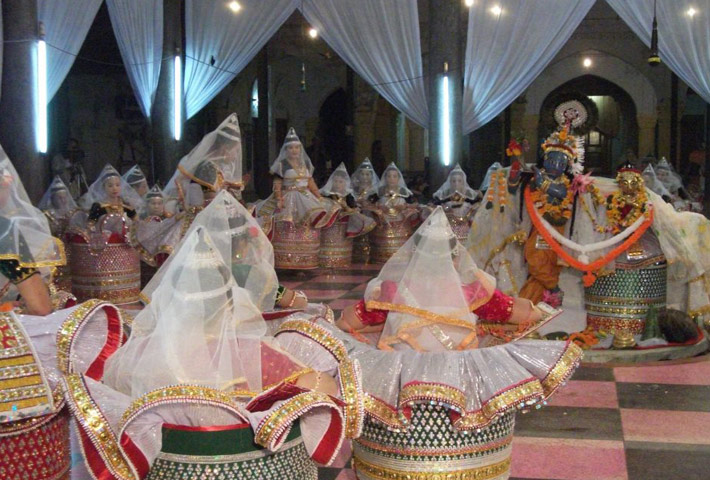
Sri Krishna Balaram
Sri Radha Govindaji
India’s Celebration of Krishna – Part 2
India’s Celebration of Krishna – Part 3



